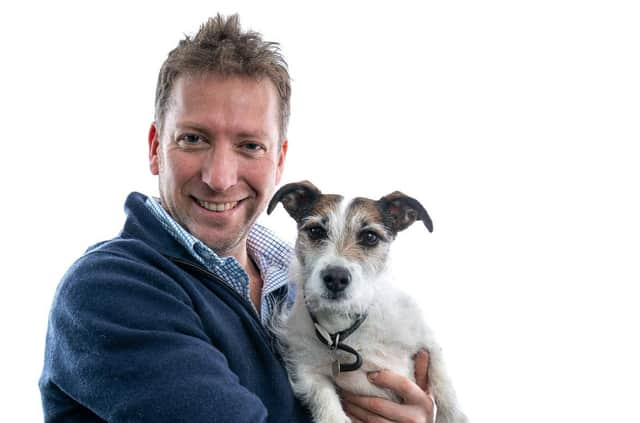The Yorkshire Vet, Julian Norton on the joy of dogs and dog walking


Out on my morning dog walk, I encountered quite a few dogs – none of them acting in a plague-like fashion – and their owners, none of whom appeared selfish, arrogant or self-important.
In fact, everyone was very friendly.
One older chap, with blue ears and a big red nose, had clearly misjudged the temperature and the direction from which the wind was blowing. “I wish I’d put my hat on,” he complained, whilst grinning widely. There were other conversations, too, mostly in praise of the glorious sunshine, with the usual undertones of despondency about the mud.
“Well, it is March,” I replied, in defence (of the mud).
Advertisement
Hide AdAdvertisement
Hide AdOn a sunny weekend morning, the patch of publicly owned open pasture near where we live is a happy place. It is grazed by a free-roaming and melancholic herd of young stirks, in various shades of brown.
On a warm day in summer, they stand in the beck to cool their feet, alongside the brave youth of Thirsk who can often be found paddling and swimming.
In March, the beck is too cold and deep for any of this, so the cattle wander, grazing on the last of the winter grass. One was trundling along the riverside path and came to investigate Emmy.
She wasn’t on a lead (because clinging onto a dog on a lead in the face of oncoming cattle is a sure-fire way of getting badly or even fatally injured) but she wasn’t interested in a bullock, and skipped on, intent on looking for discarded tennis balls.
Advertisement
Hide AdAdvertisement
Hide AdLater, we found another herd member investigating a bush. The springer spaniel which rushed past, replete with new haircut and bright pink rubber ball, was too preoccupied to notice. Bill, in his eighties, shuffled along after his ‘new’ terrier.
He has recently lost both his wife and his geriatric Labrador but the roly-poly little Jack Russell that he had rescued had given him a reason to get back out in the fresh air. In the distance, on the far side of a large puddle, a gang of dogs were having a great time while their owners enjoyed a chat.
Even the elderly Shih Tzu, with his tongue hanging out of the front of his toothless mouth, was having fun. His old legs were too short to keep up with the youngsters, but he didn’t seem to mind.
Meanwhile, in the still-bare trees, birds sang, declaring that spring was on its way. It was a scene of human and animal amity – a tonic, especially at a time of global aggression, hostility and unpleasantness.
Advertisement
Hide AdAdvertisement
Hide AdBut animal amity was of no great surprise to me. The human-canine bond is strong. It is one that brings solace, support and mutual benefit and dates back through antiquity. A grave has been discovered in Jordan, dating back 16,500 years, in which a man was buried with his dog.
This was around the time Sapiens settled in the Americas and three millennia before the agricultural revolution.
Later, back in front of my computer, I opened an email from the owners of a dog called ‘Bear’. It went like this:
Dear Julian, Helen and Ed,
We just wanted to say Thank you for the care you gave to our special Bear. From Julian’s diagnosis to the way the whole of Bear’s end of life was dealt with by Ed was above and beyond and meant the world to all of us. Thank you for your empathy, your honesty and the caring nature of the whole team.
Thank you from the bottom of our hearts.